
How to Use ULN2003A breakout board: Examples, Pinouts, and Specs
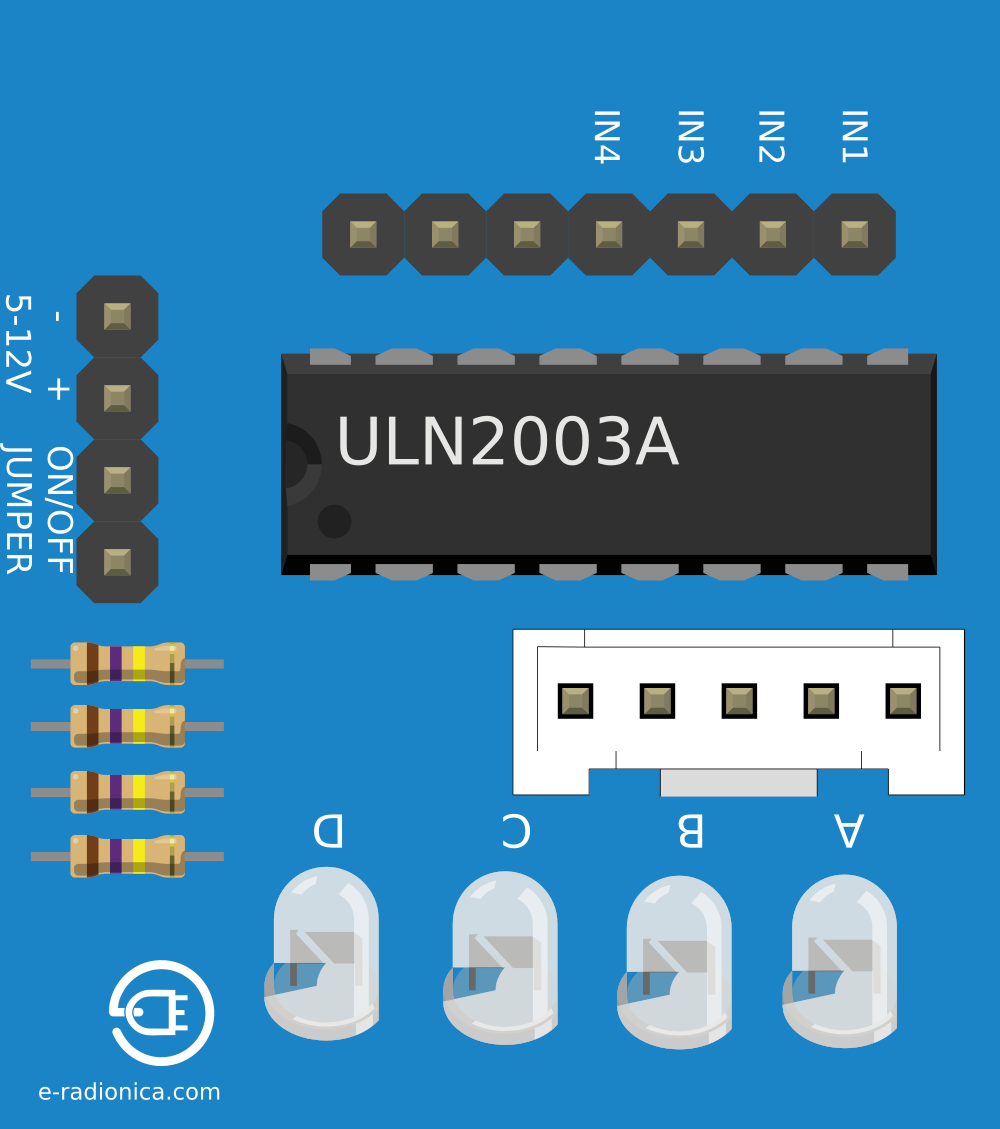
 Design with ULN2003A breakout board in Cirkit Designer
Design with ULN2003A breakout board in Cirkit DesignerIntroduction
The ULN2003A breakout board is a compact and efficient solution for driving high-current loads with low-voltage control signals. It features the ULN2003A integrated circuit, which contains seven NPN Darlington pairs capable of handling up to 500mA per channel with a maximum voltage of 50V. This breakout board is commonly used in applications such as stepper motor driving, relay control, and solenoid actuation.
Explore Projects Built with ULN2003A breakout board
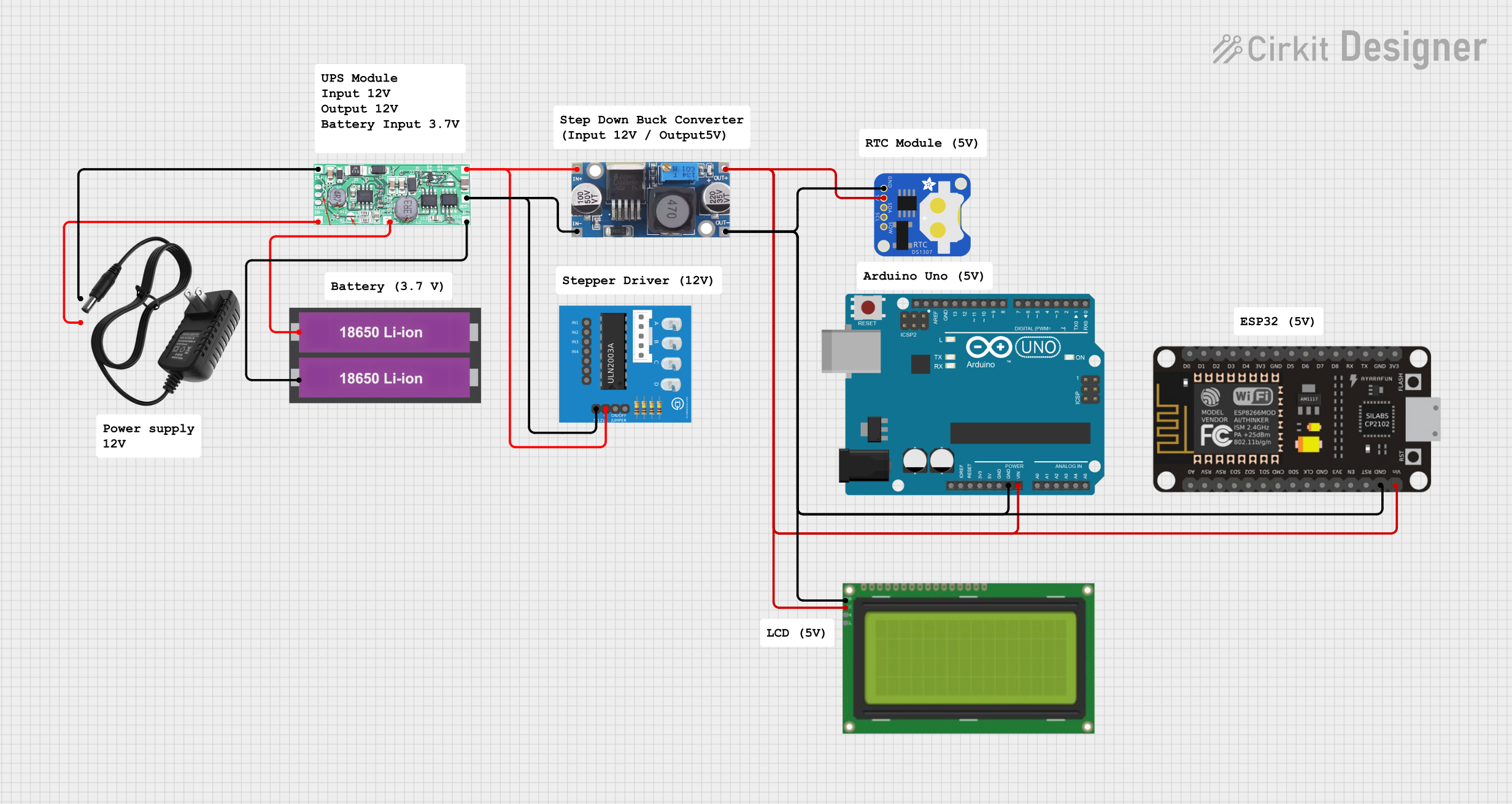
 Open Project in Cirkit Designer
Open Project in Cirkit Designer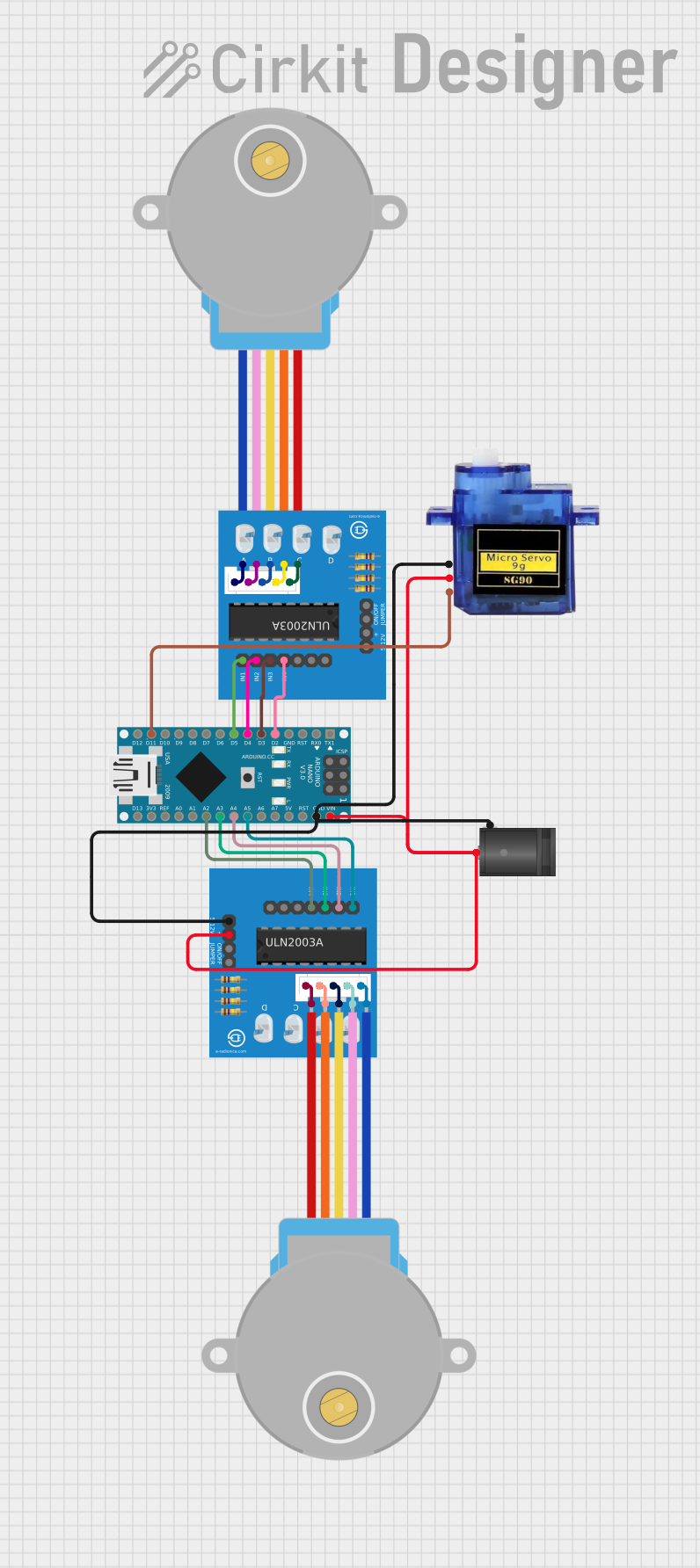
 Open Project in Cirkit Designer
Open Project in Cirkit Designer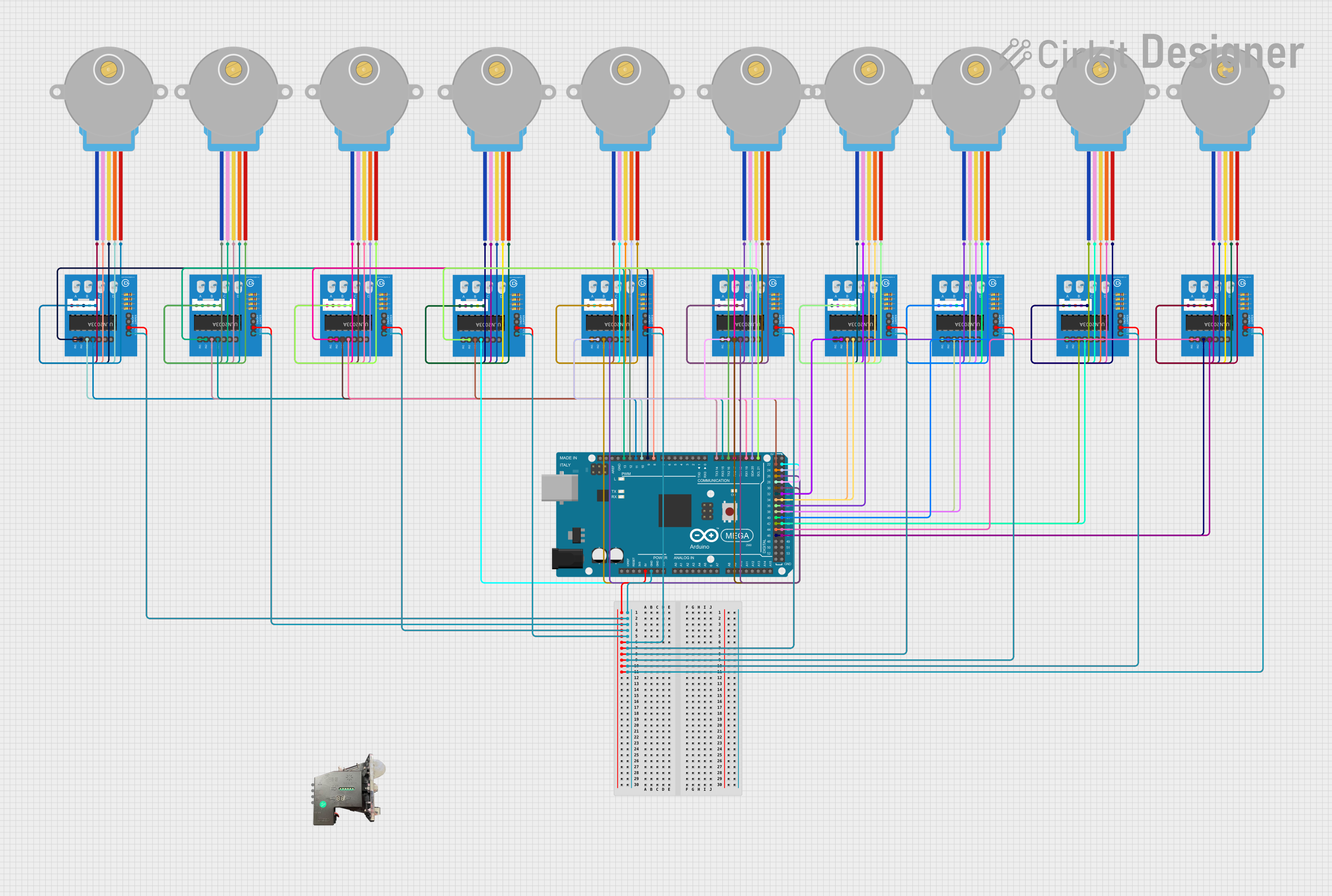
 Open Project in Cirkit Designer
Open Project in Cirkit Designer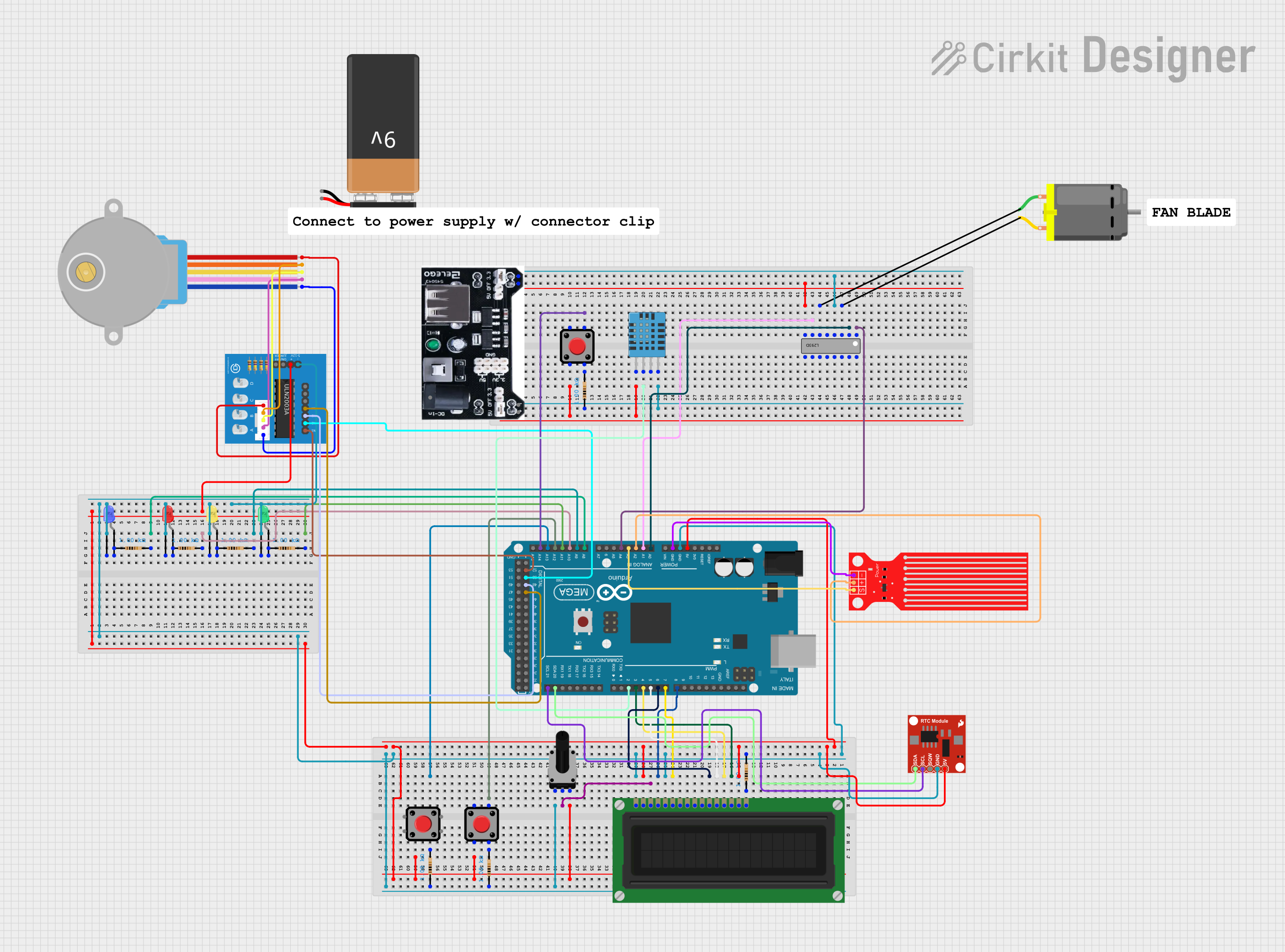
 Open Project in Cirkit Designer
Open Project in Cirkit DesignerExplore Projects Built with ULN2003A breakout board

 Open Project in Cirkit Designer
Open Project in Cirkit Designer
 Open Project in Cirkit Designer
Open Project in Cirkit Designer
 Open Project in Cirkit Designer
Open Project in Cirkit Designer
 Open Project in Cirkit Designer
Open Project in Cirkit DesignerCommon Applications and Use Cases
- Stepper motor driving for 3D printers, CNC machines, and robotics
- Relay control for home automation and industrial equipment
- Solenoid actuation in vending machines and locking mechanisms
- LED array driving for signage and decorative lighting
Technical Specifications
Key Technical Details
- Operating Voltage (Vcc): 5V typical (up to 50V max)
- Output Current (per channel): 500mA max
- Peak Output Current (per channel): 600mA
- Input Voltage (Logic Level): 3.3V to 5V
- Clamping Voltage: 50V (max)
- Mounting Type: Through-hole
Pin Configuration and Descriptions
| Pin Number | Pin Name | Description |
|---|---|---|
| 1 | IN1 | Input for Channel 1 |
| 2 | IN2 | Input for Channel 2 |
| 3 | IN3 | Input for Channel 3 |
| 4 | IN4 | Input for Channel 4 |
| 5 | IN5 | Input for Channel 5 |
| 6 | IN6 | Input for Channel 6 |
| 7 | IN7 | Input for Channel 7 |
| 8 | GND | Ground |
| 9 | COM | Common free-wheeling diodes |
| 10 | OUT1 | Output for Channel 1 |
| 11 | OUT2 | Output for Channel 2 |
| 12 | OUT3 | Output for Channel 3 |
| 13 | OUT4 | Output for Channel 4 |
| 14 | OUT5 | Output for Channel 5 |
| 15 | OUT6 | Output for Channel 6 |
| 16 | OUT7 | Output for Channel 7 |
Usage Instructions
How to Use the Component in a Circuit
- Connect the input pins (IN1-IN7) to the control signals from your microcontroller.
- Connect the output pins (OUT1-OUT7) to the loads you wish to drive.
- Connect the COM pin to the positive voltage supply if using inductive loads.
- Ensure the GND pin is connected to the ground of your control circuit.
- Apply the control signals to the input pins to activate the corresponding outputs.
Important Considerations and Best Practices
- Use a current limiting resistor on the input if the control signal exceeds the recommended input voltage.
- Ensure the total current through all outputs does not exceed the maximum rating of the IC.
- Use external flyback diodes for inductive loads if the internal diodes do not meet the requirements.
- Avoid operating the breakout board at its maximum ratings for extended periods to prevent overheating and ensure longevity.
Example Code for Arduino UNO
// Define the input pins connected to the ULN2003A
const int inputPins[] = {2, 3, 4, 5, 6, 7, 8};
void setup() {
// Set all the input pins as outputs
for (int i = 0; i < 7; i++) {
pinMode(inputPins[i], OUTPUT);
}
}
void loop() {
// Activate each channel in sequence
for (int i = 0; i < 7; i++) {
digitalWrite(inputPins[i], HIGH); // Turn on the channel
delay(1000); // Wait for 1 second
digitalWrite(inputPins[i], LOW); // Turn off the channel
}
}
Troubleshooting and FAQs
Common Issues Users Might Face
- Outputs not activating: Ensure that the input signals are within the correct voltage range and that the GND and COM pins are properly connected.
- Overheating: Check if the current through the channels is within the specified limits and that the board is not operating at maximum ratings continuously.
- Unexpected behavior with inductive loads: Verify that the COM pin is connected to the supply voltage and that external diodes are used if necessary.
Solutions and Tips for Troubleshooting
- Double-check wiring and connections for any loose or incorrect connections.
- Use a multimeter to verify the input signal voltage and the continuity of the output load circuit.
- Implement a test code that sequentially activates each channel to isolate and identify any issues with specific channels or loads.
FAQs
Q: Can I drive a load that requires more than 500mA? A: No, each channel can only handle up to 500mA. For higher currents, consider using a different driver or parallel connections with proper current sharing.
Q: Is it necessary to use external flyback diodes with inductive loads? A: The ULN2003A has built-in flyback diodes for common inductive loads. However, for loads with higher inductive kickback, external diodes may be necessary.
Q: Can I control the ULN2003A with a 3.3V logic level? A: Yes, the ULN2003A can be controlled with 3.3V logic levels, making it compatible with a wide range of microcontrollers.
Q: How can I dissipate heat from the ULN2003A if I'm driving loads near the maximum current rating? A: Attach a heat sink to the ULN2003A or ensure adequate airflow around the breakout board to help dissipate heat.